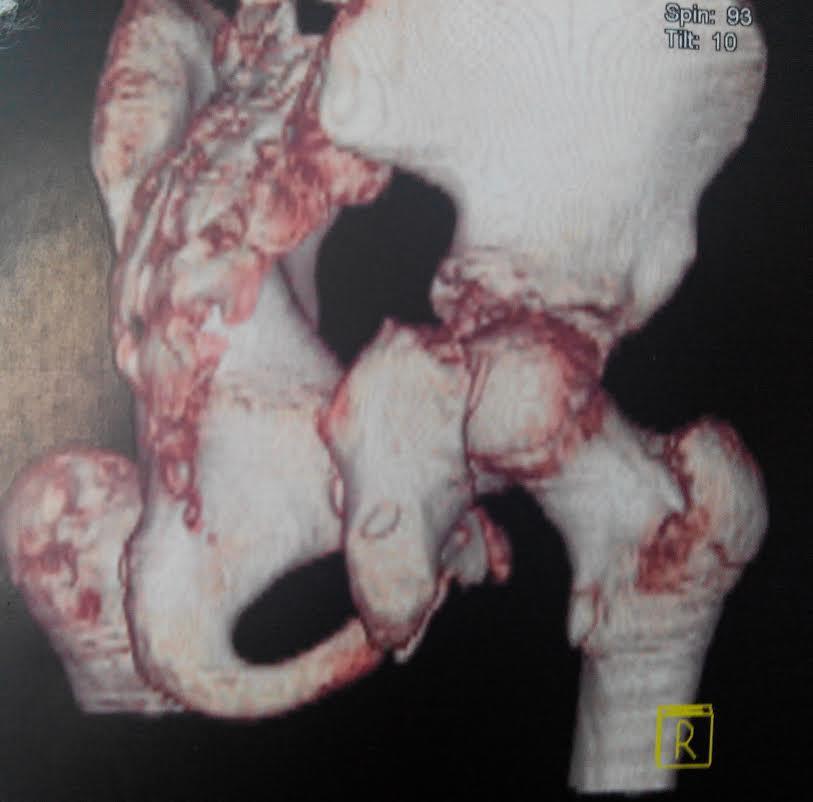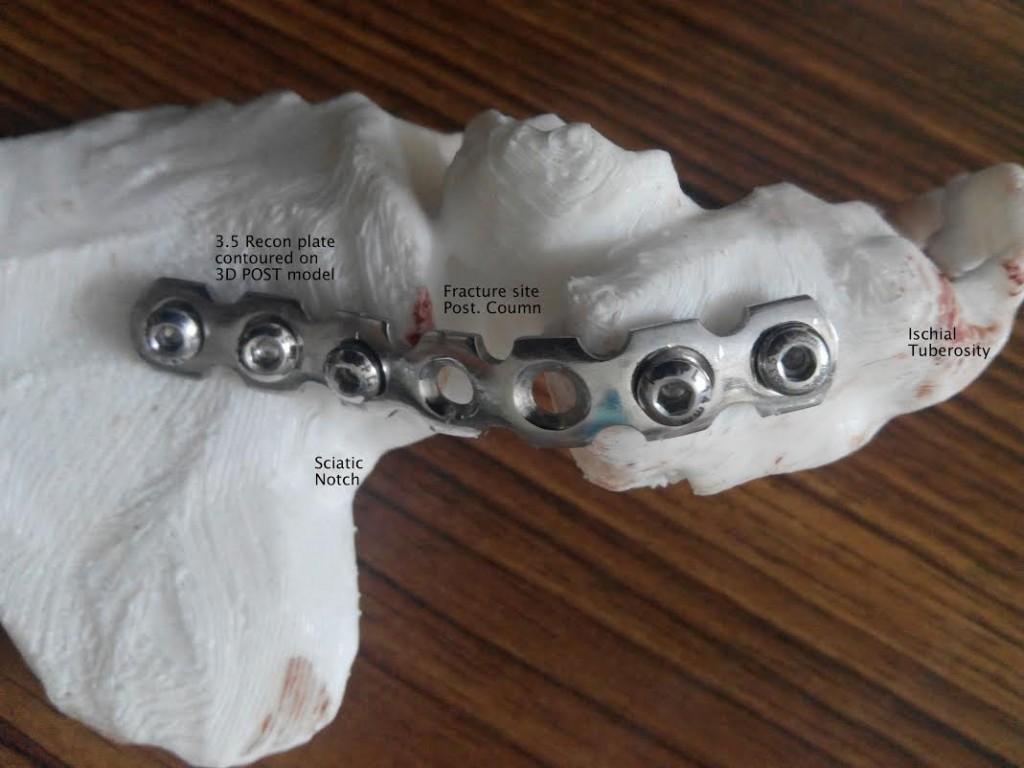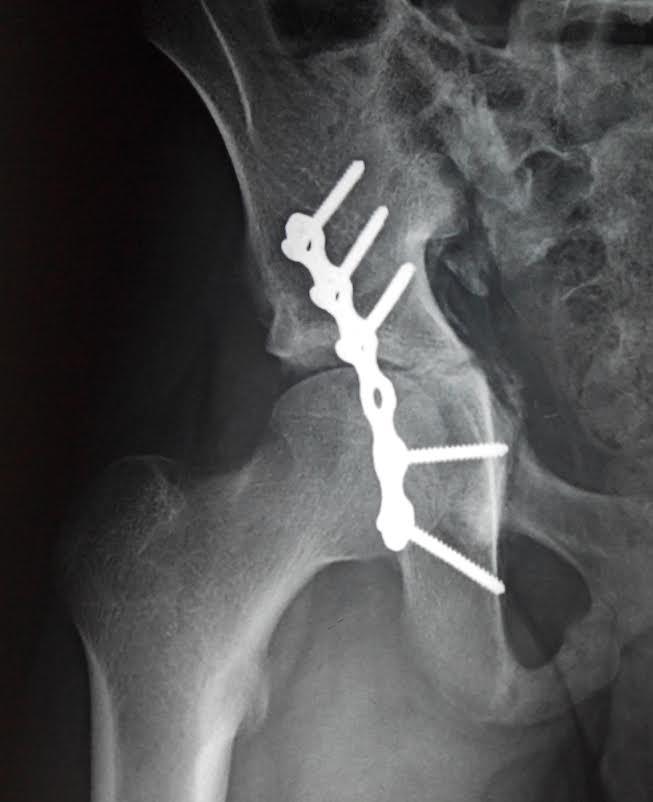2014 brought us a lot of inspirational stories from within the medical field, thanks to 3D printing. We have seen the technology make previously inoperable surgeries possible, and we have seen several lives saved due to the increasing awareness of the potential that 3D printing provides. Medical professionals from all over the globe are beginning to recognize that 3D printing will play a huge role in the future of medicine.
For one surgeon in Nagpur, India, named Dr. Vaibhav Bagaria, 3D printing provided him and his team with a method of reducing surgical risks, while also saving money and medication needed for his patient.
It all started when a 16-year-old boy was brought into the emergency room after having been the victim of a motor vehicle accident. The boy was in bad shape, having suffered a pelvic fracture with disruption of his pelvic ring, and a fracture of his acetabulum.
The typical surgery on a person’s acetabulum is considered to be very challenging and requires a “steep learning curve,” Dr. Bagaria tells 3DPrint.com. It is a risky surgery because the patient usually suffers significant blood loss.
Dr. Bagaria, however, decided to try something relatively new, and use 3D printing technology to try and reduce many of the risk factors, as well as save time and money on the surgery. Creating what is called a “3D patient optimized surgical tool,” or 3D POST, Dr. Bagaria first took a CT scan of the fracture and the surrounding area, before 3D printing a 1:1 scale model of the injury.
The 3D printed model allowed Dr. Bagaria and the rest of his surgical team to prepare for the surgery. Using the model, Dr. Bagaria was able to create a 7-hole reconstruction plate that was pre-contoured. They then used the model to carry out a surgical simulation prior to taking part in the real thing. The surgeons were able to drill the screw trajectories, measure the screw lengths required, and confirm the positions of the plate, all with the help of this 3D printed model. The model was then sterilized and used for intraoperative referencing during the real surgery.
As for the surgery, it was very successful — thanks in major part to the 3D printed model. The surgical time was greatly reduced, as was blood loss and the amount of anaesthetics required for the patient. The surgeons were able to achieve a “near-perfect” fracture reduction, and the 16-year-old patient is now doing just fine.
After the surgery was complete, Dr. Bagaria and team were also able to use the 3D printed models as educational tools for their surgical residents.
“3D Patient Optimised Surgical Tools (3D POST) developed from 3D printing the CT scans of patients appear to be a promising approach that can help improve the surgical outcomes and reduce the surgical time and blood loss,” Dr. Bagaria tells 3DPrint.com
Without a doubt, 2015 will be even more exciting when it comes to 3D printing in the medical field. How must farther along we will be advanced by this time next year is still yet to be determined. However, if we keep pace with all of the incredible innovations that took place in 2014, 2015 will be an extraordinary year. What do you think about the use of 3D printed medical models in aiding surgeons in difficult surgeries? Discuss in the 3D Printed Medical Model forum thread on 3DPB.com, and be sure to check out the video below provided to us by Dr. Bagaria.
Subscribe to Our Email Newsletter
Stay up-to-date on all the latest news from the 3D printing industry and receive information and offers from third party vendors.
Print Services
Upload your 3D Models and get them printed quickly and efficiently.
You May Also Like
Reinventing Reindustrialization: Why NAVWAR Project Manager Spencer Koroly Invented a Made-in-America 3D Printer
It has become virtually impossible to regularly follow additive manufacturing (AM) industry news and not stumble across the term “defense industrial base” (DIB), a concept encompassing all the many diverse...
Inside The Barnes Global Advisors’ Vision for a Stronger AM Ecosystem
As additive manufacturing (AM) continues to revolutionize the industrial landscape, Pittsburgh-based consultancy The Barnes Global Advisors (TBGA) is helping shape what that future looks like. As the largest independent AM...
Ruggedized: How USMC Innovation Officer Matt Pine Navigates 3D Printing in the Military
Disclaimer: Matt Pine’s views are not the views of the Department of Defense nor the U.S. Marine Corps Throughout this decade thus far, the military’s adoption of additive manufacturing (AM)...
U.S. Congress Calls Out 3D Printing in Proposal for Commercial Reserve Manufacturing Network
Last week, the U.S. House of Representatives’ Appropriations Committee moved the FY 2026 defense bill forward to the House floor. Included in the legislation is a $131 million proposal for...






































